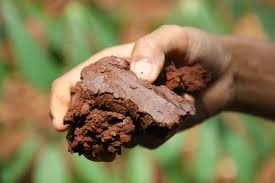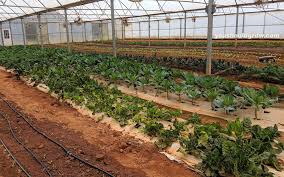Clay soil can be a challenging environment for gardeners, often seen as too heavy, compacted, or difficult to manage. It tends to become slick and sticky when wet and cracks into large, solid chunks when dry. However, despite these challenges, clay soil can be transformed into a productive, thriving garden with proper care and understanding. I have spent years growing vegetables in clay soil, and through consistent effort, we’ve developed a mutually beneficial relationship. By respecting the soil’s needs and working with its unique characteristics, it rewards me with a fruitful harvest.
Understanding Clay Soil
The most significant feature of clay soil is its density. The tiny particles are far smaller than those of sand, giving clay a slick texture when wet. When water coats the particles, they stick together, making it easy to form a solid ball with the soil. One simple test to determine if you have clay is to combine a bit of soil with water in a jar and let it settle. In clay, the sediment forms a thick, mud-like layer, and the water may take hours to clear.
Because of its fine texture, clay soil often becomes compacted, limiting the oxygen available to plant roots and soil microorganisms. This is where mulching becomes vital. Mulches help absorb the impact of heavy rains, reduce compaction, and promote airflow through the soil, all of which benefit plant growth. Earthworms thrive in these environments, helping to naturally aerate the soil with their constant tunneling. In vegetable gardens, applying mulch prevents the soil from becoming too tightly packed, promoting healthy root systems.

Compaction can also occur from human and pet traffic, so it’s essential to avoid walking on garden beds. Once clay soil becomes wet, it’s best to wait for it to dry before attempting any work, as trying to handle wet clay only results in a sticky mess. To determine when the soil is dry enough to work, I use a simple test: toss a spadeful of soil into the air and catch it with the spade. If the soil shatters, it’s time to begin gardening; if it cracks into large chunks, it’s still too wet.
Improving Clay Soil
While working with clay soil can seem daunting, it has its advantages. Due to its density, clay retains moisture and nutrients well, making it ideal for plants that need steady water and nutrient availability. To enhance soil fertility, gardeners can use slow-release fertilizers like rock phosphate or gypsum (calcium sulfate). While gypsum does not directly loosen clay, it helps improve the soil’s structure and adds calcium, which is beneficial for plant growth.
Adding organic matter is key to improving clay soil over time. Coarse materials like compost, weathered sawdust, or chopped leaves can significantly improve the soil’s texture. Unlike fine materials like peat moss, these chunky additions provide life rafts for beneficial microorganisms that help break down the compacted soil and create a loamy texture.

After adding organic matter for a few seasons, you will begin to notice significant improvements in the soil’s structure. It will dry more quickly after rain, crack less in dry weather, and require less effort to keep aerated. Using a broadfork (a tool with long tines) is an effective way to loosen the soil without digging, which can be especially helpful for restoring air to the root zone in planting beds.
Best Vegetables for Clay Soil
When working with clay soil, it’s a good idea to start with vegetables that naturally thrive in such conditions. Shallow-rooted crops like lettuce, chard, and snap beans benefit from the moisture retention of clay. Cruciferous vegetables like broccoli, Brussels sprouts, and cabbage also perform well in clay because their roots enjoy the firm, anchored environment. Additionally, mid- and late-season corn can do well in these soils.
Squash and pumpkins are among the best vegetables for clay soil. As long as planting holes are enriched with plenty of compost, these vegetables seem to thrive in clay, making them excellent choices. Surprisingly, rice also grows well in clay soil, thanks to its ability to hold water, making it a staple crop in many parts of the world.

Conclusion
Clay soil may present challenges, but with the right approach, it can be transformed into a productive and thriving garden space. By improving soil structure with organic matter, adding nutrients, and selecting appropriate crops, gardeners can harness the full potential of clay soil. With patience and thoughtful care, it becomes a rich environment for growing vegetables year after year.
